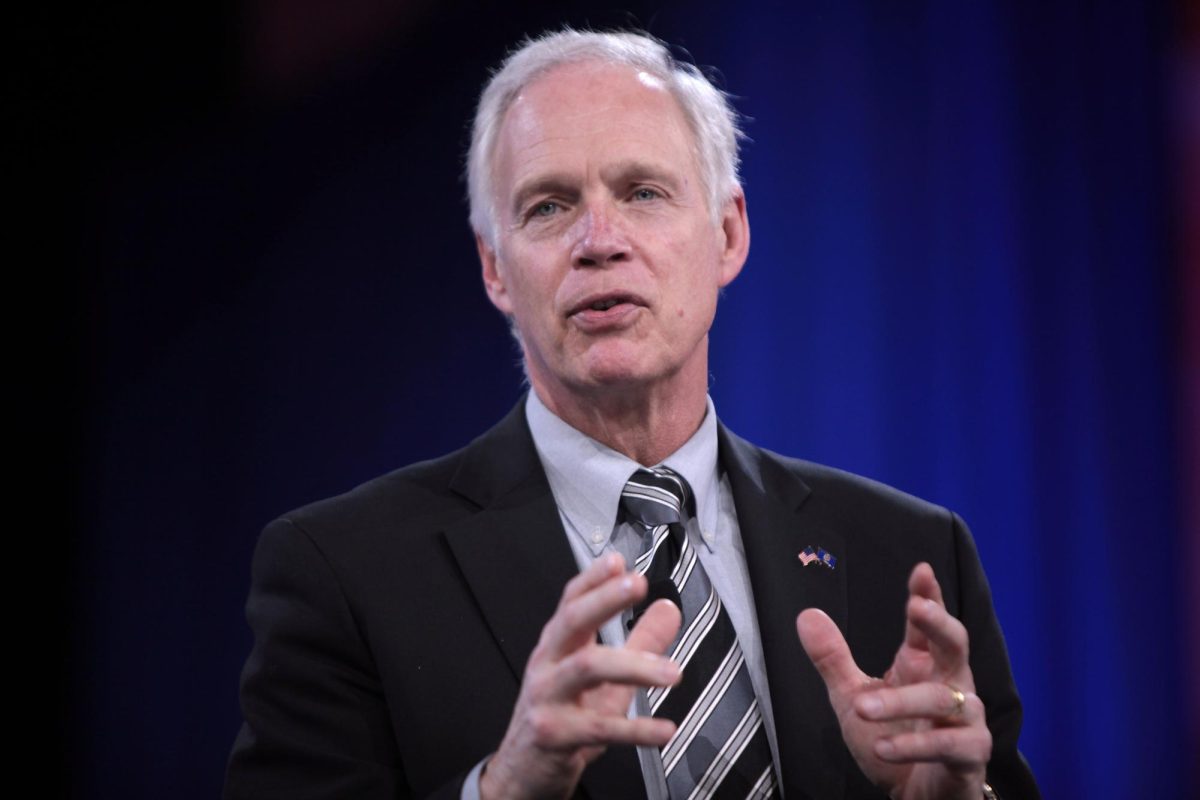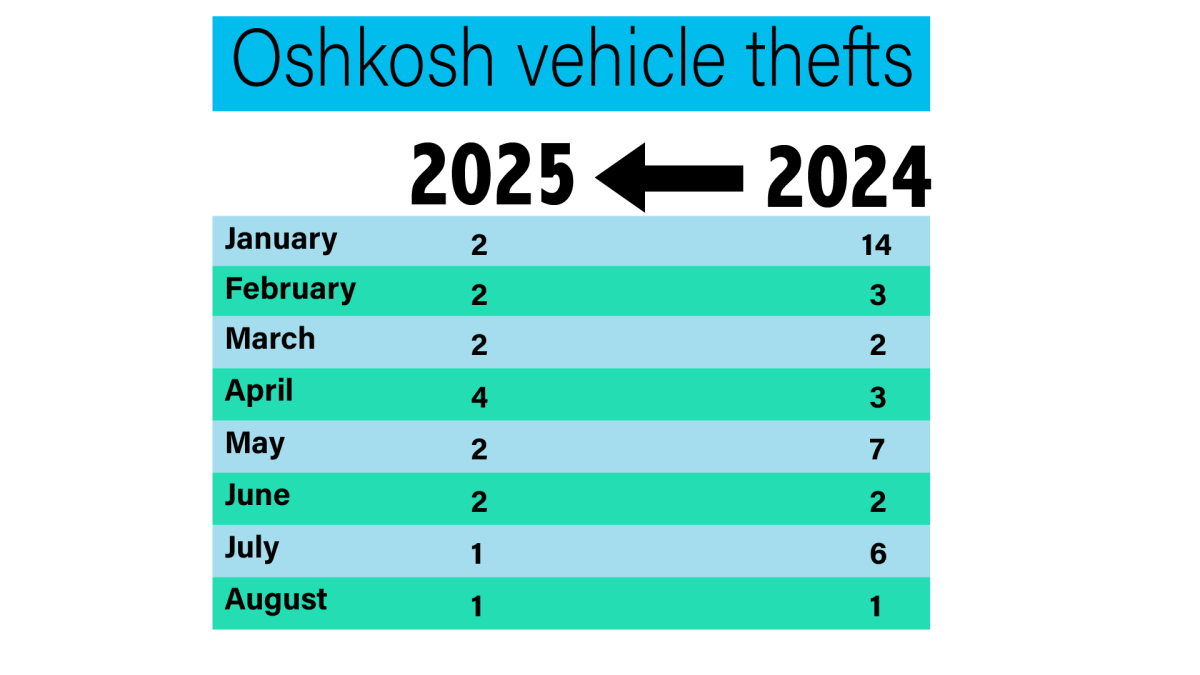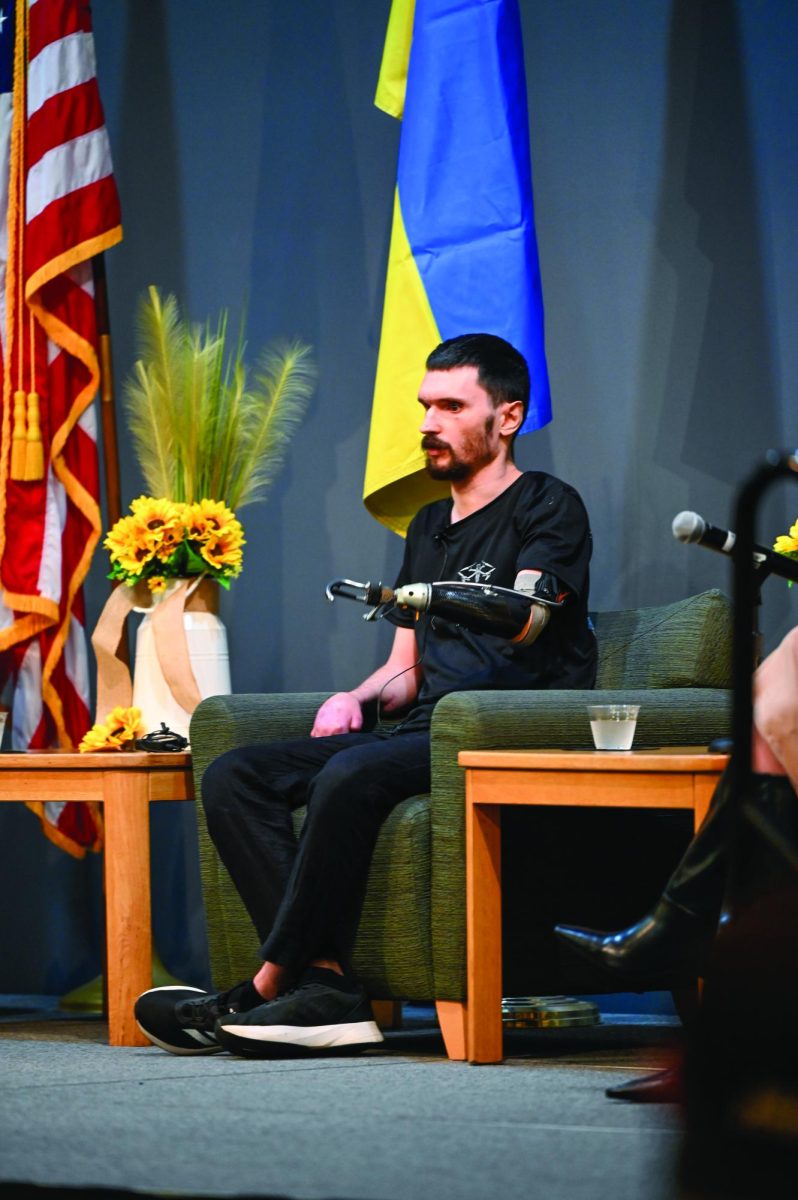UW Oshkosh geology professor Joseph Peterson was teaching an oceanology class at Northern Illinois University on Valentine’s Day in 2008 when a man entered his lecture hall and used three guns to kill five students and injure 14 other people, including Peterson.
“It took about a second or two for me to really register what was happening,” Peterson said. “My initial thought, which was kind of strange, is that this is a drill. This can’t be real. This has to be some kind of training exercise.”
That day, Peterson was lecturing in a large auditorium in front of about 180 students. Peterson said the shooter entered through the exit door behind where he was lecturing and began firing directly into the lecture pit from the stage.
“I jumped off the stage and realized my only exit was through the line of fire, out the back of the auditorium,” Peterson said. “So I started running up the aisle, crouching along with everybody else who was trying to run up and out of the aisle. And I kept my eye on him the entire time, and for a brief moment, we made eye contact, and he dropped the shotgun and pulled a 9 mm handgun out of his belt and fired it at me and hit me in the left shoulder.”
According to Peterson, the shooter’s motivation is still unknown.
“He knew at that time on that day there would be a bunch of people in that classroom,” Peterson said. “That was really the only reason he chose it. There was no connection between myself or anyone in the class and him.”
Peterson said just talking to people after the shooting was a way for him to recover. To this day, Peterson finds answering people’s questions and being open about the discussion rewarding.
“I think it’s a topic that makes people very uncomfortable, and I understand why,” Peterson said. “I definitely understand why. But I think it’s something students do need to start thinking about.”
However, Peterson said at first he was someone who shied away from talking about the topic.
“I started to hate this phrase that people kept pushing on me, ‘this is the new normal,’” Peterson said. “I was like, ‘I don’t want the new normal. I want the old normal, the not-thinking about this stuff normal.’”
Peterson began teaching at UWO in 2010. Since then, he has teamed up with UPD Capt. Chris Tarmann to teach classes to faculty and community advisers about active shooter scenarios.
“Dr. Joseph Peterson and I train certain areas of the campus each year on how to respond to active shooter situations, and we teach select faculty and staff on a monthly basis,” Tarmann said. “Dr. Peterson attended a class that I was teaching about how to respond to active shooter situations three years ago. After the class Dr. Peterson and I met and decided that it would be a much more powerful training if we did it together.”
Because, unfortunately, this is becoming the new normal, Peterson said.
“I would go into a restaurant and I couldn’t sit anywhere where I wasn’t facing the door,” Peterson said. “I’d walk into the movie theater, and I’d look around and think ‘how would I get out of here if I have to?’ And eventually it kind of occurred to me that there’s nothing wrong with doing that and I should’ve been doing that. We all should be doing that.”
Peterson and Tarmann described the classes they teach as two-hour workshops with two parts. During the first part, the duo describes patterns that have been found among active shooters in the past and tendencies professors are encouraged to look for in students and faculty that may lead them to think someone is considering a malicious act.
Lane Meyer, a junior and community advisor in South Scott, received some information about what to do in case of a malicious act during his CA training. He said he learned about what to look for and do if a resident is displaying signs of doing something dangerous.
“If they are showing signs of doing anything, you can try to talk to them and figure out what’s wrong and stuff,” Meyer said. “But, if you think they are really dangerous, probably contact University Police.”
During the second half of the training, Tarmann and Peterson go over what to do in an active shooter situation and are willing to answer questions from the audience. However, giving people step-by-step directions is impossible, Peterson said.
“We can’t really go into a department and say ‘here’s exactly what you do,’ because they’re different and they’re unpredictable,” Peterson said.
However, there are some tips and ideas law enforcement can provide to the public about active shooter instances.
“There are a few national models for responding to situations like this,” Tarmann said. “The model we use is ‘Avoid, Deny, Defend.’”
According to Tarmann, this is a model he and Peterson teach during their presentations. Each word has its own points.
“Avoid” starts with state of mind, Tarmann said. It is important to pay attention to surroundings, have an exit plan and try to move away from the threat.
When getting away is difficult or maybe even impossible, deny, Tarmann said. This means creating barriers to slow down the threat, turning the lights off and remaining out of sight by hiding behind objects.
Lastly, it is important to defend if avoiding and denying is impossible, Tarmann said. Being aggressive and staying committed to actions is key. Do not fight fairly, Tarmann said.
Junior CA in Fletcher Hall Timmlyn Schoeder recently received active shooter training as part of being a CA. She described the different tips she was given in case of an active shooter scenario on campus.
“We were told tons of things,” Schoeder said. “Call the cops if it’s safe. If it’s not too safe, call them and throw your phone in the trash so they can hear.
There’s cover and concealment. Cover is like getting behind a brick wall, so you don’t get shot and concealment is going to a place where you cannot be seen.
Get everyone out, if you can, and go to the nearest building that everyone can fit in. Don’t just stand outside. When you see police officers, put your hands up because they are looking for the person with the gun.”
After recently expanding their trainings outside of UWO to other campuses and organizations, Tarmann and Peterson are now working towards finding ways to make their trainings student friendly.
“We do want to find a way where we eventually get this to, if it’s your roommate or you’re noticing one of your friends is becoming really withdrawn or you’re in a classroom or the mall or restaurant or movie theater and something happens, how do you respond?” Peterson said. “So that is something we are actively working on modifying.”
However, Peterson and Tarmann are always happy to chat with students individually. Students can contact either of them via email. They are also willing to meet with clubs and student organizations, Peterson said.
“Dr. Peterson and I can also be available to train students on this very topic,” Tarmann said. “We do a one-and-a-half–to two-hour presentation and training.”
More than anything, Peterson hopes people who attend his trainings put some thought into what they would do if caught in the same kind of situation he was in.
Knowing where exits are located in public areas and visualizing escape plans are things students and faculty should keep in the back of their mind, Peterson said.
“You get on an airplane, and they don’t let you get off the ground until they’ve done their safety briefing,” Peterson said. “I don’t want it to sound like this ultra-heightened alertness, but it’s just being present with your surroundings. I’m not hyper-vigilant. I don’t get worried walking down the street, but I do try to keep an eye on surroundings.”








